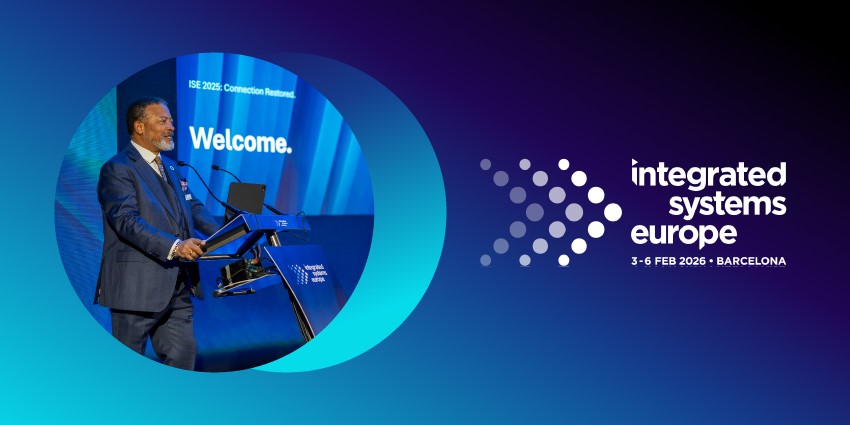For years, Rich Communication Services sat quietly in the background of mobile strategy. Telecom operators pushed it, Google supported it, but most businesses stuck with SMS or jumped to WhatsApp. That changed when Apple confirmed RCS support in iOS 18. Suddenly, RCS business messaging is garnering a great deal of attention.
Now that Apple’s in the game, RCS is within reach of billions of mobile users. Analysts expect the value of the market to quadruple by 2031. Operators are seeing the surge already: Orange reported a 400 percent increase in RCS traffic in France last year alone.
For IT leaders, this raises an obvious question: what now? Customers will soon expect brands to communicate through messages that look and feel richer than SMS, but rolling out a new standard isn’t just about flipping a switch. It takes planning, metrics, and the right platform support.
- CPaaS Workforce Engagement: Smarter Alerts for Frontline and Deskless Employees
- Closing the Loop with Real-Time Feedback: CPaaS for CX and EX Leaders
RCS Business Messaging: Market Momentum & Scale
RCS has been around for years, but only recently has it begun to resemble more than a telecom side project. The catalyst, of course, was Apple. Once the iPhone added support, RCS business messaging went from an Android-only experiment to a genuine cross-platform channel. That single step instantly doubled its potential reach and forced enterprises to take a second look.
Still, interest has been growing slowly over time. In the last two years, RCS business messaging adoption has grown by approximately 30 times worldwide. By 2030, Juniper Research predicts messaging traffic will grow to around three trillion messages per year, largely thanks to the rise of RCS.
Vendors aren’t waiting on the sidelines. Sinch recently expanded its work with Verizon to make RCS available at the carrier level in the U.S. Twilio moved the service out of pilot phase and into general availability. Together, these moves demonstrate that RCS is quickly becoming an integral part of the modern enterprise messaging strategy.
What RCS Adds Beyond SMS, MMS, and WhatsApp
SMS is universal, but it’s also blunt. A 160-character limit and the absence of visuals make it reliable, but not exactly engaging. MMS added pictures and video, but the experience was clunky, and file sizes were capped so low that brands rarely used it for anything meaningful.
RCS business messaging fills that gap. It supports high-quality images, videos, and even carousels of product options, all sent directly inside the native messaging app. Messages carry a verified sender ID, so customers know exactly who they’re dealing with. That matters: research shows more than half of consumers are more likely to trust a message when the sender is verified.
Analytics is another big step forward. SMS campaigns have always been challenging to measure; open rates are often an estimate. With RCS, enterprises can track deliveries, opens, click-throughs, and even the time a customer spends engaging with rich media. It transforms messaging from a blind broadcast into a channel with the same level of transparency that marketers expect from email or web campaigns.
How does that compare with WhatsApp? The two aren’t direct substitutes. WhatsApp has scale, three billion users globally, and strong commerce tools like catalogs and in-app payments. However, it also sits within Meta’s ecosystem, where conversation-based pricing, template approvals, and compliance concerns have caused headaches for some enterprises. Regulators have fined financial firms billions for failing to capture WhatsApp communications.
RCS, in contrast, is being developed as an open standard, backed by carriers and increasingly woven into CPaaS platforms. The real play for most enterprises isn’t picking one or the other; it’s blending both as part of a broader enterprise messaging strategy.
RCS Business Messaging Adoption Challenges
For all the excitement surrounding RCS business messaging, adoption within large enterprises isn’t always straightforward. Most organizations already run on layers of legacy systems, from on-prem contact centers to heavily customized CRMs, and those stacks don’t always play nicely with new APIs.
Tooling and Integration
Adding RCS into existing workflows often reveals just how complex and messy the average enterprise communications infrastructure really is. APIs often differ from one vendor to the next, and delivery receipts or formatting rules don’t always match. That means development teams end up building custom connectors, which slows down pilots and drives up costs.
One answer is the staged approach already common in CPaaS rollouts. Rather than attempting a full replacement, enterprises can start with one or two low-risk use cases, such as appointment reminders or delivery updates, and prove the value quickly. Running RCS alongside SMS in a CPaaS platform also creates a safety net, so failures in one channel don’t disrupt the entire customer journey.
Reach and Fragmentation
Even with Apple support, global coverage is uneven. Carriers differ in how fast they’ve rolled out RCS, and features can vary from market to market. For a global brand, this creates uncertainty about whether customers in every geography will get the same experience.
The workaround many enterprises are choosing is hybrid delivery. Pairing RCS with SMS fallback through CPaaS ensures the message still arrives, even if the richer format isn’t supported on a given device or network. EasyPark, for instance, combines both channels to keep millions of users informed, achieving delivery rates close to 97 percent.
Compliance and Security
Compliance is where enthusiasm often collides with reality. Regulators don’t care how slick the channel looks; they care whether conversations are recorded, auditable, and stored in the right place. WhatsApp is a useful comparison here: despite its encryption, banks and brokers were fined billions because staff used it without proper record-keeping.
RCS business messaging doesn’t automatically solve that, but it does change the risk profile. Messages come from verified IDs, which reduces spoofing. Some vendors, like 8×8, now provide consent logging and audit trails as part of their service.
That gives compliance teams more to work with. The gap? End-to-end encryption is still being rolled out, and coverage is consistent across regions. Enterprises that jump in early need to know exactly what level of protection they’re getting, and whether it meets the bar in finance, healthcare, or government.
Proving ROI
The other sticking point is proof. It’s one thing to show a demo of flashy rich cards. It’s another to convince a CFO that the channel will deliver something material. “Cost per message” doesn’t cut it in the boardroom.
What moves the needle are outcomes. Did no-show rates fall? Did cart recoveries improve? Have fraud losses dropped? If a pilot can’t answer those questions, momentum fades fast. That’s why the most successful rollouts tie RCS pilots to a single, visible business goal, prove the lift, and only then push for scale. Case studies demonstrate positive returns, such as Southwork Council, which implemented RCS with Webex and increased consumer engagement by 51 percent. Still, businesses need to identify and track their own ROI metrics.
The RCS Business Messaging Adoption Roadmap
Adopting RCS business messaging across an enterprise is not something that happens overnight. It’s closer to moving into a new neighborhood, where you take time to look around, try the commute, meet the people nearby, and only after that decide whether it’s the right place to stay.
Start Small
The first step is figuring out where RCS can make a visible difference with minimal risk. That usually means low-stakes, high-volume messages, like reminders, delivery updates, and service alerts. These are simple to automate and easy to compare against SMS. If the results don’t show improvement, you know quickly. If they do, you’ve got proof points to take upstairs.
Healthcare provider Niva Bupa followed exactly that pattern. By moving appointment reminders and health tips into RCS, with verified sender IDs and clearer formatting, it saw better delivery and stronger engagement. The company also reported a positive ROI on the pilot, giving executives the confidence to scale.
Measure What Matters
Once a pilot is live, the data has to move beyond delivery receipts. Enterprises need to tie results back to business outcomes. For a retailer, that might be abandoned cart recovery. For a service provider, this could result in fewer missed appointments.
The early performance signals are encouraging. Juniper has reported that RCS campaigns can drive click-through rates three to seven times higher than SMS. But the click itself isn’t the win, it’s what comes after. Did more people complete their booking?
Did call center queues shrink because customers handled issues in the message thread instead? Those are the figures that stick in a CFO’s mind.
Scale and Orchestrate
If the pilot proves its worth, the next step is widening the scope. That might involve shifting promotional campaigns to RCS, updating loyalty programs, or utilising carousels and quick-reply buttons to guide customers through the purchasing process. The trick is not to run RCS in a vacuum. It works best when integrated into a CPaaS platform, alongside SMS, WhatsApp, and even email.
That orchestration layer matters. Not every customer will receive RCS in the same way, especially across markets. A CPaaS system can decide, in real time, whether to send a rich RCS card, fall back to SMS, or route through another channel.
Governance and Compliance
Growth brings new headaches: more teams are involved, more data is moving across borders, and increased scrutiny from regulators. Enterprises that scale RCS successfully usually set up a clear RACI model, who owns consent, who monitors security, who tracks delivery, and who reports to the board.
This is also where CPaaS providers make a difference. Many now offer audit trails, consent logging, and storage options to meet the requirements of GDPR or HIPAA standards. Some even handle versioning of the GSMA Universal Profile so enterprises don’t get caught out by subtle differences in carrier implementations. That kind of guardrail transforms a promising pilot into a program that can withstand compliance teams and, more importantly, regulators.
RCS Business Messaging: Tips for Success
The sudden rise of RCS business messaging has caught the eye of executives who, until recently, barely noticed it. Apple’s move to support RCS on the iPhone tipped the scales, and carriers are reporting sharp increases in traffic.
The reality is, though, jumping straight in is risky. The bigger picture is strategy. RCS works best when it’s one part of a broader mix, stitched together through CPaaS. That way, if a carrier doesn’t deliver RCS, a fallback kicks in.
Early adopters of RCS business messaging have left a trail of lessons worth noting. A few stand out:
- Don’t rush it: Big launches often stumble. A small pilot will show results faster and build internal confidence.
- Lean on CPaaS: RCS doesn’t replace SMS or WhatsApp; it has to work with them. CPaaS platforms take on that orchestration, ensuring that messages reach customers regardless of the circumstances.
- Keep a backup plan: Depending on a single vendor or route is risky. Enterprises that spread traffic across providers give themselves breathing room if one fails or changes its pricing.
- Measure more than clicks: Boards don’t care about open rates. They care about fewer no-shows, higher sales, or lower support costs.
- Speak to every stakeholder: A CMO wants conversions. A CIO wants smooth integration. A CISO worries about compliance. A CFO asks about ROI. If RCS can’t answer each of those angles, it won’t get full buy-in.
For organizations ready to explore, the first step isn’t a huge campaign; it’s a pilot with a clear outcome. From there, RCS can take its place as part of a durable enterprise messaging strategy.







